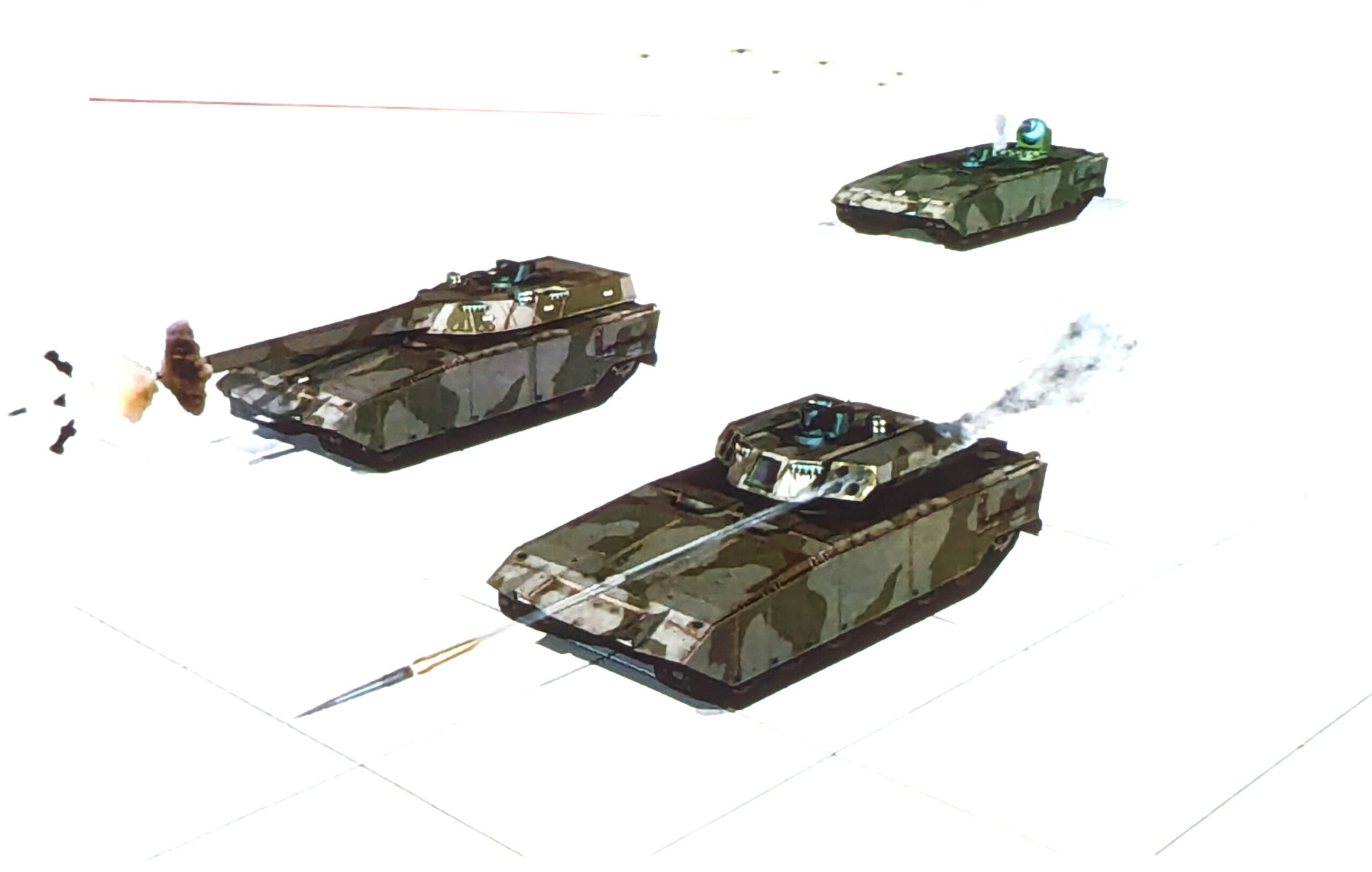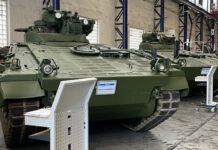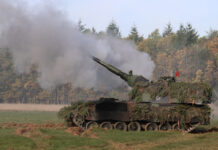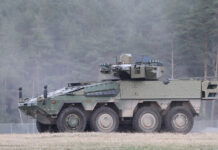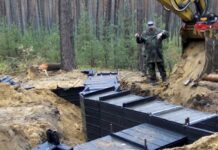A senior Bundeswehr procurement officer, speaking on 23 January 2024 at the Defence iQ International Armoured Vehicles conference in Twickenham, outlined how Germany’s vision for the future Main Ground Combat System (MGCS) project has moved from a single tank design to a multi-platform solution.
Noting a German emphasis on “mobility, mobility and mobility” as the overriding MGCS consideration, Colonel Armin Dirks, Head of Operations for the MGCS Combined Project Team within the Federal Office of Bundeswehr Equipment, Information Technology and In-Service Support (BAAINBw), said, “From our point of view, the time for a single all-in-one platform is over.”
Citing Lieutenant General Andreas Marlow, the vice chief of the German Army, who had earlier noted that in future the tank has to provide more capabilities than it does now, Col Dirks said, “At a very early stage we learnt that if we want to integrate all these future capabilities on a single platform like before, like we have right now, we would end up [going even larger] with the respective size, and at that time the chief of the army said, ‘No way: 50 tonnes; not a single drop more.’”
Thus, said Col Dirks, “We had to leave the capability analysis focusing on a single platform behind and go to the requirement analysis of the formation, put together all the requirements the future system has to provide.”
The colonel then presented a conceptual image showing a formation of three AFVs that were each smaller than an MBT. He explained that the two leading AFVs featuring direct-fire weapons, one of which was armed with a main gun and the other with a missile launcher, would be manned, while the AFV behind them, featuring an indirect-fire weapon, would be unmanned.
Regarding other design considerations, Col Dirks noted that all three vehicles would need to share the same chassis to minimise their logistics footprint, while a considerable degree of automation would both reduce crewing requirements and improve lethality.
Thus, the MGCS project under the German concept now appears to feature multiple 50-tonne optionally manned AFVs that collectively fulfil a complete set of capability requirements otherwise unable to be encompassed within a single MBT. The colonel additionally noted thus such a multi-platform solution offers a particular advantage, in that, if in future a new capability needs to be introduced, another vehicle can be added to the formation rather than further burdening the vehicles already in it.
While again stressing the importance of mobility within AFV design’s ‘iron triangle’ of firepower, survivability and manoeuvrability – to keep the enemy busy and present that enemy with new dilemmas – Col Dirks added three key enablers: surveillance, detection, recognition and identification (SDRI); command, control, computers and intelligence (C4I); and sustainability.
The colonel additionally noted that in terms of energy management, fuel consumption and reducing the logistics footprint, the new MGCS AFVs would need to use a hybrid power unit. “We need to open that door,” he said.
Meanwhile, because the AFVs’ SDRI range would need to exceed their own firepower range, the colonel said they would require their own unmanned aerial vehicles, since their SDRI requirements could not be achieved with platform-based sensors.
Moreover, with the crew of the main-gun-armed AFV in its chassis rather than the turret, leaving less room for ammunition storage than a Leopard 2 MBT, Col Dirks said it would need the technology to secure “more one-shot kills”.

“So we need that,” said Col Dirks. “We need a game changer – not a linear extrapolation of what we have right now, only an improvement; what we need is to restart because the Leopard 2 deserves its retirement in a couple of years and we need something new, with which we can start again, of a lower size, a lower weight and then have the growth capability for the future.
“In 2050 the Leopard 2 will then be in service for [over 70 years], and so we look to the future system, the successor system, to use at least until the end of the century,” the colonel added. “Therefore, we need to widen our view a little bit.”
The MGCS project was launched in 2017 by Germany and France to replace their respective Leopard 2 and Leclerc MBTs. It was originally to be developed by KNDS, a joint holding company set up in 2015 by Germany’s KMW and France’s Nexter Systems, although German firm Rheinmetall joined the MGCS project in 2019.
Asked by ESD what the French thought of the German plans for a multi-platform replacement of the MBT, Col Dirks replied that the French Army, at least, was “80 to 90% in favour” of the proposals, while conceding that there was greater reticence in other areas of the overall French defence establishment.


